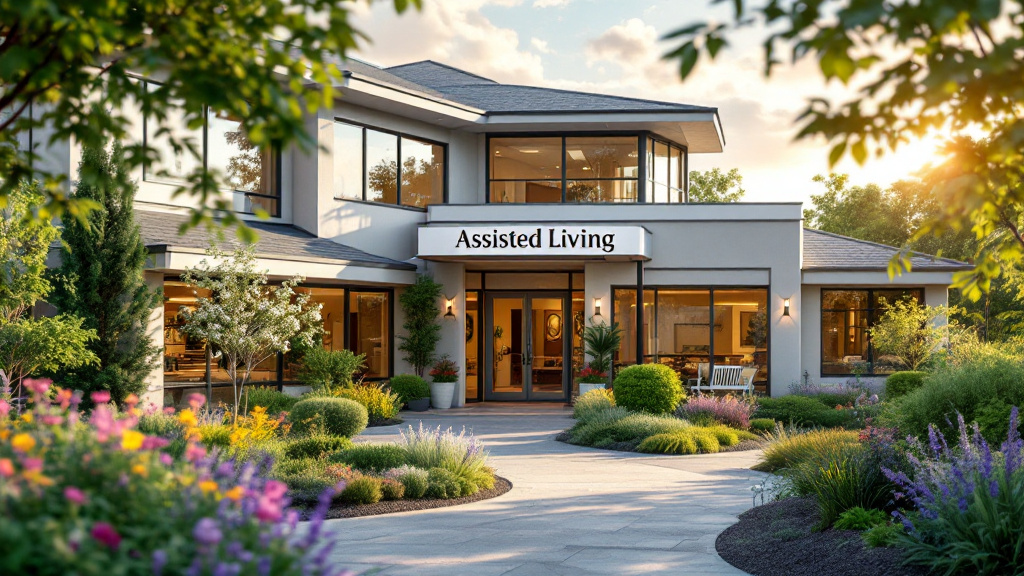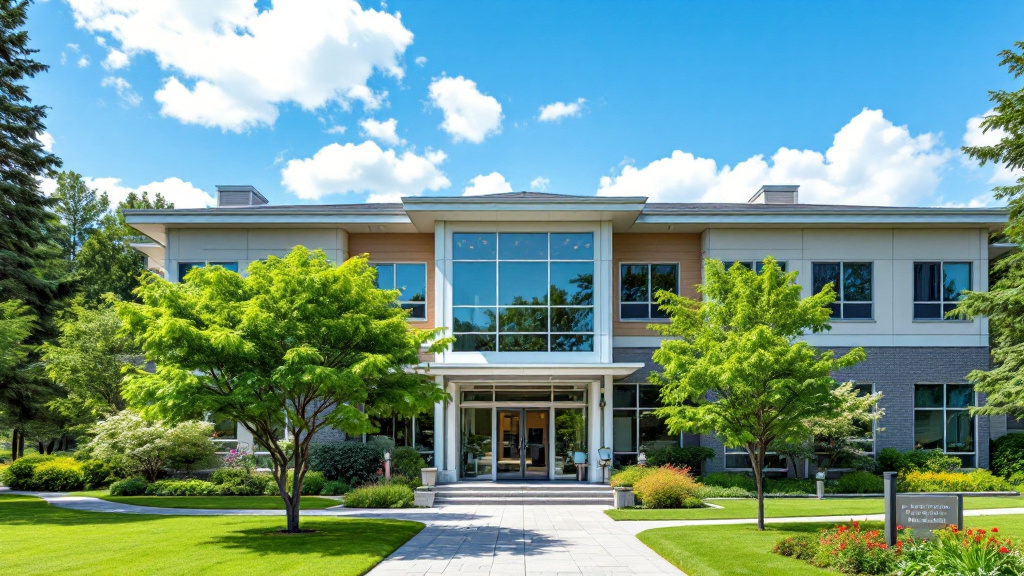Assisted Living vs. Independent Living

Understanding Living Options
When considering living options for yourself or a loved one, it's important to understand the differences between assisted living and independent living. Both options cater to different needs and lifestyles. Let's explore each option in more detail.
%20for%20Children%20copy%2027.jpg)
Assisted Living Overview
Assisted living refers to living communities and healthcare services designed for individuals who need some level of assistance with their daily care. These communities provide a supportive environment for seniors who may require help with activities of daily living, such as bathing, dressing, medication management, and meal preparation. Assisted living facilities aim to strike a balance between independence and necessary care.
Assisted living communities offer a range of services and amenities that cater to the specific needs of their residents. These can include assistance with personal care, housekeeping, transportation, and 24-hour staffing for emergencies. The goal is to provide a safe and comfortable living environment while promoting independence and social engagement.
To learn more about the benefits of assisted living, you can refer to our article on the benefits of assisted living. Additionally, if you're interested in exploring how to choose the right assisted living facility, we have a comprehensive guide available on how to choose the right assisted living facility.
Independent Living Overview
On the other hand, independent living is designed for seniors who are still active and require little to no support with the activities of daily living. Independent living communities, sometimes referred to as retirement communities or senior apartments, are tailored to meet the needs of individuals who desire a maintenance-free lifestyle.
Independent living communities typically offer private apartments or cottages for residents. These communities foster a sense of community and provide a range of amenities such as fitness centers, dining options, social activities, and transportation services. While independent living does not provide 24-hour support from trained caregivers and nurses, it allows residents to enjoy a vibrant and independent lifestyle.
To delve deeper into the key differences between assisted living and independent living, you can refer to our article on differences between assisted living and nursing homes.
Understanding the nuances of assisted living and independent living is crucial when making decisions about housing options. Assessing individual needs, preferences, and level of desired independence will help determine which option is the best fit.
Pros and Cons
When deciding between assisted living and independent living, it's essential to consider the advantages and considerations associated with each option. Both assisted living and independent living offer unique benefits that cater to different needs and preferences. Let's explore the advantages of each and the factors to consider when making a decision.
Advantages of Assisted Living
Assisted living facilities provide a supportive environment that offers caregiver support and assistance with activities of daily living [1]. This level of care sets assisted living apart from independent living options. Some advantages of assisted living include:
- Caregiver Support: Assisted living communities have staff available around the clock to assist residents with tasks such as dressing, grooming, showering, and medication management. This level of support can provide peace of mind for individuals who require additional assistance.
- Meals and Nutritional Support: Assisted living communities typically offer three meals per day, prepared by a chef and tailored to individual residents' medical and nutritional requirements. Specialized diets for conditions like diabetes or heart disease are often available [1].
- Social Engagement: Assisted living facilities offer numerous opportunities for socialization, intellectual stimulation, and building relationships. Communities organize social gatherings, games, field trips, and events to help residents connect with others. These social activities can contribute to cognitive well-being and an extended, fulfilling life [2].
Advantages of Independent Living
Independent living communities cater to individuals who desire an active and independent lifestyle with added social opportunities. Some advantages of independent living include:
- Lifestyle Independence: Independent living provides residents with the freedom to maintain an active lifestyle while enjoying private living spaces comparable to those found in small homes or apartments. These spaces often include living areas and full-service kitchens.
- Social Opportunities: Independent living communities offer a range of social activities, communal dining experiences, and events that promote socialization and the formation of relationships. These opportunities allow residents to engage with like-minded individuals and build a sense of community.
Considerations for Each
When considering assisted living versus independent living, several factors should be taken into account. These factors can help individuals determine which option aligns best with their specific needs and preferences. Some considerations include:
- Level of Care: Assessing the level of care required is essential. Assisted living provides more comprehensive care, while independent living is suitable for individuals who are self-sufficient and do not require daily assistance.
- Cost: Understanding the cost implications of both assisted living and independent living is crucial. Assisted living may include the cost of meals, housekeeping, and care services in the overall package, while these may be additional expenses in independent living.
- Health Condition: Evaluating one's current health condition and potential future needs is vital. Individuals with chronic health conditions or mobility issues may benefit from the additional support and care provided in assisted living facilities.
By considering the advantages and individual considerations of both assisted living and independent living, individuals can make an informed decision that aligns with their lifestyle, preferences, and needs. It's recommended to tour various facilities, ask questions, and gather all necessary information before making a choice. For more information on how to select the right living option, refer to our article on how to choose the right assisted living facility.
%20for%20Children%20copy%2028.jpg)
Cost and Financial Aspects
When considering the different living options, it's important to understand the cost and financial aspects associated with both assisted living and independent living. The expenses involved can vary depending on location, facility, and the level of care required.
Cost of Assisted Living
Moving into an assisted living facility can cost upwards of $4,500 per month, according to data from a Statista.com survey. The cost may be higher for individuals requiring additional help with daily activities or those with chronic health conditions. However, it's important to note that assisted living communities often include three meals per day at no additional cost. These meals are prepared under the direction of a chef, taking into account the medical and nutritional needs of individual residents. Specialized diets to accommodate medical conditions such as diabetes or heart disease are also offered.
The median monthly cost of assisted living in the United States is about $4,500, with costs varying depending on the location. It's worth considering that additional fees in assisted living facilities, such as assistance with activities of daily living, medication management, or specialized care, can increase the monthly rate by hundreds or thousands of dollars. Medicaid may help cover the cost of care services in assisted living for eligible older adults.
Cost of Independent Living
In comparison to assisted living, the cost of independent living is generally lower. Independent living communities typically charge between $2,000 and $3,500 per month. The cost of independent living varies based on location and amenities. Rents can range from $1,709 to $4,595 per month, with some facilities reporting an even wider range of costs, averaging $870 to $7,545 per month [4].
It's important to carefully consider the financial implications of each living option. Factors such as personal budget, available financial resources, and potential long-term care needs should be taken into account when making a decision.
For a more comprehensive understanding of the cost and financial aspects of assisted living and independent living, it is recommended to consult with specific facilities and inquire about their pricing structures and any available financial assistance options.
Services and Amenities
When comparing assisted living and independent living options, it's important to consider the services and amenities provided by each. Both types of communities offer unique features that cater to the needs and preferences of older adults.
Services in Assisted Living
Assisted living facilities are designed to provide support and assistance to seniors who may require help with activities of daily living (ADLs) and benefit from caregiver support. Some of the services commonly offered in assisted living communities include:
- Caregiver support and assistance with ADLs, such as dressing, grooming, showering, and mobility [1].
- Medication management and assistance with scheduling doctor's visits.
- 24/7 staff availability to address the needs of residents and provide a safe and secure living environment.
- Specialized memory care units with advanced security measures for residents with cognitive issues [3].
In addition to these essential services, assisted living facilities also prioritize social engagement and intellectual stimulation. They often organize social gatherings, games, field trips, and events to promote socialization and help residents build quality relationships. These activities can potentially contribute to avoiding cognitive decline and extending life [2].
Amenities in Independent Living
Independent living communities offer an active and autonomous lifestyle for older adults who do not require assistance with ADLs. These communities provide a range of amenities and services that promote an independent and socially engaging lifestyle. Some of the amenities typically found in independent living communities include:
- Private living spaces comparable to those in a small home or apartment, including a living area and full-service kitchen.
- Opportunities for socialization, communal dining experiences, and events that facilitate relationship-building among residents [3].
While independent living communities may not offer the same level of caregiver assistance as assisted living facilities, they focus on providing an environment that promotes an active and engaging lifestyle. Residents have the freedom to pursue their interests, participate in social activities, and enjoy the amenities provided within the community.
Choosing between assisted living and independent living depends on individual needs, preferences, and level of assistance required. Assessing the available services, amenities, and the level of care and support needed will help individuals make informed decisions about the living option that best suits their lifestyle and well-being.
Social Engagement
Maintaining social connections and engaging in meaningful activities is important for overall well-being, regardless of whether one chooses assisted living or independent living. Let's explore the social activities and opportunities available in both settings.
Social Activities in Assisted Living
Assisted living facilities recognize the value of social interaction and provide opportunities for residents to socialize, enjoy intellectual stimulation, and build quality relationships. Many communities organize a variety of social activities, gatherings, games, field trips, and events to help residents connect with others [2]. These activities are designed to be engaging for individuals with physical or cognitive limitations, ensuring that everyone can participate and enjoy a vibrant social life.
In assisted living, social activities are usually organized on-site, within the community. This makes it convenient for residents to participate without the need for extensive travel or transportation arrangements. The activities are tailored to cater to the unique needs and interests of the residents, fostering a sense of community and companionship. Engaging in social activities in assisted living can also have potential cognitive benefits, helping to reduce the risk of cognitive decline and promoting overall well-being.
Social Opportunities in Independent Living
Independent living communities also emphasize the importance of social engagement for their residents. However, the nature of social programs in independent living may differ from those in assisted living. Social activities in independent living communities are often targeted towards active adults, providing opportunities for classes, trips, and volunteering.
Independent living communities typically offer a variety of programs and amenities that encourage social interaction and create opportunities for residents to connect with one another. These programs may include book clubs, fitness classes, hobby groups, and organized outings. The focus is on fostering an environment where residents can engage in activities they enjoy and meet others who share similar interests.
While independent living communities may offer a wide range of social opportunities, it's worth noting that the level of engagement and the types of activities may vary. Since independent living communities cater to active adults, the emphasis is on providing options that align with their lifestyle and preferences.
Both assisted living and independent living communities recognize the importance of social engagement in promoting overall well-being. Social isolation in older adults can lead to various health risks, so having access to social activities and opportunities is beneficial for residents in both settings. Engaging in social activities not only provides companionship but also contributes to a sense of belonging and purpose.
Remember, when considering your living options, it's important to assess the social activities and opportunities available in each setting to ensure they align with your preferences and social needs. Whether you prioritize on-site activities tailored to individuals with limitations or a broader range of programs catering to active adults, both assisted living and independent living offer opportunities for social interaction and engagement.
%20for%20Children%20copy%2029.jpg)
Decision-making Factors
When considering the choice between assisted living and independent living, there are several factors to take into account. These factors can help individuals determine which living option is best suited to their needs and preferences.
Factors for Assisted Living
Assisted living communities are tailored to provide caregiver support and assistance with activities of daily living (ADLs), such as dressing, grooming, showering, moving around, and managing medication. This 24/7 caregiver presence is a significant differentiating factor between assisted and independent living options [1]. Here are some key factors to consider when deciding if assisted living is the right choice:
- Personal Care Assistance: Assisted living facilities offer help with ADLs, medication assistance, and some medical care. This level of personal care is not typically provided in independent living communities.
- 24/7 Staff Availability: Assisted living facilities have staff available around the clock to assist residents with their daily needs, including toileting assistance, dressing and grooming support, scheduling doctor's visits, and transportation to appointments. Some assisted living communities may also have specialized memory care units for residents with cognitive issues, providing advanced security measures.
- Higher Monthly Costs: The monthly costs for assisted living are generally higher than independent living due to the additional services and caregiver support provided. It's important to consider the financial aspects when evaluating your options.
Factors for Independent Living
Independent living is designed for seniors who are still active and require little to no support with ADLs, such as cooking, personal hygiene, and medication and money management. Here are some factors to consider when deciding if independent living is the right fit:
- Active Lifestyle: Independent living communities are geared towards active older adults who want to maintain an independent lifestyle. Residents manage their own schedules and have the freedom to participate in social activities that interest them.
- No Personal Care or Medical Services: Unlike assisted living, independent living communities do not provide personal care or medical services. These communities are better suited for individuals in relatively good health who do not require 24-hour support from trained caregivers and nurses.
When making a decision between assisted living and independent living, it's essential to carefully consider these factors and assess your personal needs, health conditions, and preferences. Consulting with family members, healthcare professionals, and touring facilities can provide valuable insights to help you make an informed decision. For more information on the admission process and questions to ask when visiting an assisted living facility, be sure to visit our related articles on how to choose the right assisted living facility, how to tour an assisted living facility, and questions to ask when visiting an assisted living facility.



















.jpg)








.jpg)





.jpg)
.jpg)
.jpg)
.jpg)
.jpg)
.jpg)
.jpg)
.jpg)



.jpg)

.jpg)
.jpg)
.jpg)
.jpg)


.jpg)
.jpg)
.jpg)
.jpg)

.jpg)
.jpg)
.jpg)


.jpg)
.jpg)










.jpg)




.jpg)
.jpg)


















